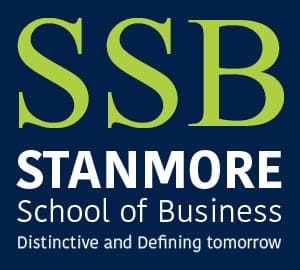Course details
Loading...
Generating course details...
• Inventory Management: This unit teaches students how to effectively manage inventory levels, track stock movements, and optimize storage space to reduce costs and improve efficiency.
• Warehouse Layout and Design: Students learn how to design and optimize warehouse layouts to improve workflow, reduce congestion, and increase productivity.
• Supply Chain Management: This unit covers the principles of supply chain management, including procurement, logistics, and distribution, to ensure smooth and efficient flow of goods.
• Warehouse Operations and Safety: Students learn about the importance of safety protocols, emergency procedures, and regulatory compliance in a warehouse environment.
• Warehouse Technology and Automation: This unit explores the use of technology and automation in warehouses, including barcode scanning, RFID, and robotics, to improve efficiency and accuracy.
• Warehouse Management Systems (WMS): Students learn how to implement and use WMS to manage inventory, track shipments, and optimize warehouse operations.
• Logistics and Transportation Management: This unit covers the principles of logistics and transportation management, including modes of transportation, freight forwarding, and customs clearance.
• Inventory Control and Tracking: Students learn how to implement effective inventory control and tracking systems to reduce stockouts, overstocking, and inventory discrepancies.
• Warehouse Performance Metrics and Analysis: This unit teaches students how to measure and analyze warehouse performance metrics, including productivity, efficiency, and cost savings.
• Warehousing and Distribution Strategies: Students learn how to develop and implement effective warehousing and distribution strategies to meet customer demands and improve supply chain efficiency.
• Certificate in Warehousing Management: This unit covers the key concepts and principles of warehousing management, including inventory management, warehouse operations, and supply chain management.
• Warehouse Management Best Practices: Students learn about the best practices in warehouse management, including safety protocols, inventory control, and technology implementation.
• Warehousing and Logistics Career Development: This unit provides guidance on career development opportunities in warehousing and logistics, including job roles, skills, and certifications.
• Warehousing and Logistics Industry Trends: Students learn about the latest trends and innovations in warehousing and logistics, including automation, technology, and sustainability.
• Warehousing and Logistics Case Studies: This unit presents real-world case studies of successful warehousing and logistics operations, highlighting best practices and lessons learned.
• Warehousing and Logistics Professional Development: Students learn how to develop and maintain professional skills and certifications in warehousing and logistics, including industry-recognized certifications and training programs.
• Warehousing and Logistics Industry Regulations: This unit covers the key regulations and compliance requirements in the warehousing and logistics industry, including safety protocols, customs clearance, and tax regulations.
• Warehousing and Logistics Environmental Sustainability: Students learn about the importance of environmental sustainability in warehousing and logistics, including green practices, waste reduction, and energy efficiency.
• Warehousing and Logistics Global Trade: This unit covers the principles of global trade, including international logistics, customs clearance, and trade agreements.
• Warehousing and Logistics Supply Chain Risk Management: Students learn how to identify and mitigate supply chain risks, including natural disasters, supplier insolvency, and cyber attacks.
• Warehousing and Logistics Supply Chain Visibility: This unit teaches students how to achieve supply chain visibility, including real-time tracking, inventory management, and shipment monitoring.
• Warehousing and Logistics Supply Chain Optimization: Students learn how to optimize supply chain operations, including inventory management, warehouse operations, and logistics management.
• Warehousing and Logistics Supply Chain Analytics: This unit covers the use of analytics and data science in supply chain management, including predictive analytics, data visualization, and business intelligence.
• Warehousing and Logistics Supply Chain Resilience: Students learn how to build supply chain resilience, including risk management, contingency planning, and business continuity planning.
• Warehousing and Logistics Supply Chain Innovation: This unit explores the latest innovations in supply chain management, including blockchain, artificial intelligence, and the Internet of Things (IoT).
• Warehousing and Logistics Supply Chain Collaboration: Students learn how to foster collaboration and communication among supply chain stakeholders, including suppliers, logistics providers, and customers.
• Warehousing and Logistics Supply Chain Security: This unit covers the importance of supply chain security, including customs clearance, border control, and cargo screening.
• Warehousing and Logistics Supply Chain Compliance: Students learn about the key compliance requirements in the warehousing and logistics industry, including safety protocols, customs clearance, and tax regulations.
• Warehousing and Logistics Supply Chain Sustainability: This unit teaches students about the importance of sustainability in supply chain management, including green practices, waste reduction, and energy efficiency.
• Warehousing and Logistics Supply Chain Digitalization: Students learn how to digitalize supply chain operations, including the use of technology, automation, and data analytics.
• Warehousing and Logistics Supply Chain Integration: This unit covers the principles of supply chain integration, including the integration of logistics, transportation, and warehousing operations.
• Warehousing and Logistics Supply Chain Visibility and Transparency: Students learn how to achieve supply chain visibility and transparency, including real-time tracking, inventory management, and shipment monitoring.
• Warehousing and Logistics Supply Chain Optimization and Improvement: This unit teaches students how to optimize and improve supply chain operations, including inventory management, warehouse operations, and logistics management.
• Warehousing and Logistics Supply Chain Analytics and Data Science: Students learn how to use analytics and data science in supply chain management, including predictive analytics, data visualization, and business intelligence.
• Warehousing and Logistics Supply Chain Resilience and Risk Management: This unit covers the importance of supply chain resilience and risk management, including risk assessment, contingency planning, and business continuity planning.
• Warehousing and Logistics Supply Chain Innovation and Technology: Students learn about the latest innovations in supply chain management, including blockchain, artificial intelligence, and the Internet of Things (IoT).
• Warehousing and Logistics Supply Chain Collaboration and Communication: This unit teaches students how to foster collaboration and communication among supply chain stakeholders, including suppliers, logistics providers, and customers.
• Warehousing and Logistics Supply Chain Security and Compliance: Students learn about the importance of supply chain security and compliance, including customs clearance, border control, and cargo screening.
• Warehousing and Logistics Supply Chain Sustainability and Digitalization: This unit covers the importance of sustainability and digitalization in supply chain management, including green practices, waste reduction, and energy efficiency.
• Warehousing and Logistics Supply Chain Integration and Visibility: Students learn how to integrate and achieve visibility in supply chain operations, including real-time tracking, inventory management, and shipment monitoring.
• Warehousing and Logistics Supply Chain Optimization and Improvement: This unit teaches students how to optimize and improve supply chain operations, including inventory management, warehouse operations, and logistics management.
• Warehousing and Logistics Supply Chain Analytics and Data Science: Students learn how to use analytics and data science in supply chain management, including predictive analytics, data visualization, and business intelligence.
• Warehousing and Logistics Supply Chain Resilience and Risk Management: This unit covers the importance of supply chain resilience and risk management, including risk assessment, contingency planning, and business continuity planning.
• Warehousing and Logistics Supply Chain Innovation and Technology: Students learn about the latest innovations in supply chain management, including blockchain, artificial intelligence, and the Internet of Things (IoT).
• Warehousing and Logistics Supply Chain Collaboration and Communication: This unit teaches students how to foster collaboration and communication among supply chain stakeholders, including suppliers, logistics providers, and customers.
• Warehousing and Logistics Supply Chain Security and Compliance: Students learn about the importance of supply chain security and compliance, including customs clearance, border control, and cargo screening.
• Warehousing and Logistics Supply Chain Sustainability and Digitalization: This unit covers the importance of sustainability and digitalization in supply chain management, including green practices, waste reduction, and energy efficiency.
• Warehousing and Logistics Supply Chain Integration and Visibility: Students learn how to integrate and achieve visibility in supply chain operations, including real-time tracking, inventory management, and shipment monitoring.
• Warehousing and Logistics Supply Chain Optimization and Improvement: This unit teaches students how to optimize and improve supply chain operations, including inventory management, warehouse operations, and logistics management.
• Warehousing and Logistics Supply Chain Analytics and Data Science: Students learn how to use analytics and data science in supply chain management, including predictive analytics, data visualization, and business intelligence.
• Warehousing and Logistics Supply Chain Resilience and Risk Management: This unit covers the importance of supply chain resilience and risk management, including risk assessment, contingency planning, and business continuity planning.
• Warehousing and Logistics Supply Chain Innovation and Technology: Students learn about the latest innovations in supply chain management, including blockchain, artificial intelligence, and the Internet of Things (IoT).
• Warehousing and Logistics Supply Chain Collaboration and Communication: This unit teaches students how to foster collaboration and communication among supply chain stakeholders, including suppliers, logistics providers, and customers.
• Warehousing and Logistics Supply Chain Security and Compliance: Students learn about the importance of supply chain security and compliance, including customs clearance, border control, and cargo screening.
• Warehousing and Logistics Supply Chain Sustainability and Digitalization: This unit covers the importance of sustainability and digitalization in supply chain management, including green practices, waste reduction, and energy efficiency.
• Warehousing and Logistics Supply Chain Integration and Visibility: Students learn how to integrate and achieve visibility in supply chain operations, including real-time tracking, inventory management, and shipment monitoring.
• Warehousing and Logistics Supply Chain Optimization and Improvement: This unit teaches students how to optimize and improve supply chain operations, including inventory management, warehouse operations, and logistics management.
• Warehousing and Logistics Supply Chain Analytics and Data Science: Students learn how to use analytics and data science in supply chain management, including predictive analytics, data visualization, and business intelligence.
• Warehousing and Logistics Supply Chain Resilience and Risk Management: This unit covers the importance of supply chain resilience and risk management, including risk assessment, contingency planning, and business continuity planning.
• Warehousing and Logistics Supply Chain Innovation and Technology: Students learn about the latest innovations in supply chain management, including blockchain, artificial intelligence, and the Internet of Things (IoT).
• Warehousing and Logistics Supply Chain Collaboration and Communication: This unit teaches students how to foster collaboration and communication among supply chain stakeholders, including suppliers

